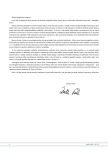Stress urinary incontinence in women: diagnostics and treatment based on AUA guidelines review
Authors:
I. Gorbachinsky; G. H. Badlani
Authors‘ workplace:
Dept of Urology, Wake Forest University
Published in:
Urol List 2011; 9(1): 38-43
Overview
Stress urinary incontinence (SUI) is a detriment to quality of life in affected women, often coexisting with other manifestations of pelvic dysfunction such as pelvic organ prolapse (POP). Diagnosis and evaluation of SUI is multifaceted, requiring concise history and physical evaluation and possibly additional urodynamic or imaging studies. Numerous interventions are available, and although surgery remains the mainstay of treatment, the optimal modality may vary depending on both the patient and surgeon. In 2009, the American Urological Association (AUA) released a new update entitled „Guideline for the Surgical Management of Female Stress Urinary Incontinence“ to compile and standardize evaluation and surgical treatment of SUI [1]. In this paper, we review these guidelines, its limitations, and further, elaborate on how they can be implemented in a urology practice.
Key words:
stress urinary incontinence, pelvic organ prolapse, AUA Guidelines
Sources
1. Appell RA, Blavia JM et al. Guidelines for the Surgical Management of Female Stress Urinary Incontinence: 2009; Update 2010.
2. Byles J, Millar CJ, Sibbritt DW et al. Living with urinary incontinence: a longitudinal study of older women. Age Ageing 2009; 38(3): 333–338.
3. Hu TW, Wagner TH, Bentkover JD et al. Costs of urinary incontinence and overactive bladder in the United States: a comparative study. Urology 2004; 63(3): 461–465.
4. Kannan H, Radican L, Turpin RS et al. Burden of illness associated with lower urinary tract symptoms including overactive bladder/urinary incontinence. Urology 2009; 74(1): 34–38.
5. Dmochowski RR, Blaivas JM, Gormley EA et al. Update of AUA guideline on the surgical management of female stress urinary incontinence. J Urol 2010; 183(5): 1906–1914.
6. Zhu L, Lang J, Liu C et al. The epidemiological study of women with urinary incontinence and risk factors for stress urinary incontinence in China. Menopause 2009; 16(4): 831–836.
7. Liapis A, Bakas P, Liapi S et al. Epidemiology of female urinary incontinence in the Greek population: EURIG study. Int Urogynecol J Pelvic Floor Dysfunct 2010; 21(2): 217–222.
8. Onur R, Deveci SE, Rahman S et al. Prevalence and risk factors of female urinary incontinence in eastern Turkey. Int J Urol 2009; 16(6): 566–569.
9. Lasserre A, Pelat C, Guéroult V et al. Urinary incontinence in French women: prevalence, risk factors, and impact on quality of life. Eur Urol 2009; 56(1): 177–183.
10. Ternent L, Vale L, Buckley B et al. Measuring outcomes of importance to women with stress urinary incontinence. BJOG 2009; 116(5): 719–725.
11. Botlero R, Bell RJ, Urguhart DM et al. Urinary incontinence is associated with lower psychological general well-being in community-dwelling women. Menopause 2010; 17(2): 332–337.
12. Lawrence JM, Lukacz ES, Liu IL et al. Pelvic floor disorders, diabetes, and obesity in women: findings from the Kaiser Permanente Continence Associated Risk Epidemiology Study. Diabetes Care 2007; 30(10): 2536–2541.
13. Leach GE, Dmochowski RR, Appell RA et al. Female Stress Urinary Incontinence Clinical Guidelines Panel summary report on surgical management of female stress urinary incontinence. The American Urological Association. J Urol 1997; 158(3 Pt 1): 875–880.
14. Richter HE, Albo ME, Zyczynski HM et al. Retropubic versus transobturator midurethral slings for stress incontinence. N Engl J Med 2010; 362(22): 2066–2076.
15. Albo ME, Richter HE, Brubaker L et al. Burch colposuspension versus fascial sling to reduce urinary stress incontinence. N Engl J Med 2007; 356(21): 2143–2155.
16. Coyne KS, Cash B, Kopp Z et al. The prevalence of chronic constipation and faecal incontinence among men and women with symptoms of overactive bladder. BJU Int 2011; 107(2): 254–261.
17. Silva WA, Kleeman S, Segal J et al. Effects of a full bladder and patient positioning on pelvic organ prolapse assessment. Obstet Gynecol 2004; 104(1): 37–41.
18. Cogan SL, Weber AM, Hammel JP. Is urethral mobility really being assessed by the pelvic organ prolapse quantification (POP-Q) system? Obstet Gynecol 2002; 99(3): 473–476.
19. Noblett K, Lane FL, Driskill CS. Does pelvic organ prolapse quantification exam predict urethral mobility in stages 0 and I prolapse? Int Urogynecol J Pelvic Floor Dysfunct 2005; 16(4): 268–271.
20. Wester C, Fitzgerald MP, Brubaker L et al. Validation of the clinical bulbocavernosus reflex. Neurourol Urodyn 2003; 22(6): 589–591.
21. Stav K, Dwyer PL, Rosamilia A. Women overestimate daytime urinary frequency: the importance of the bladder diary. J Urol 2009; 181(5): 2176–2180.
22. Abrams P, Andersson KE, Bider L et al. Fourth International Consultation on Incontinence Recommendations of the International Scientific Committee: Evaluation and treatment of urinary incontinence, pelvic organ prolapse, and fecal incontinence. Neurourol Urodyn; 29(1): 213–240.
Labels
Paediatric urologist UrologyArticle was published in
Urological Journal

2011 Issue 1
Most read in this issue
- Management of urethral stricture: dorsal flap from buccal mucosa – the gold standard
- Hormone therapy in the management of prostate cancer: treating the cancer without hurting the patient
- Urinary tract and genital trauma
- Technique of harvesting oral mucosa for urethral reconstruction. Evaluation of postoperative complications and patient satisfaction
